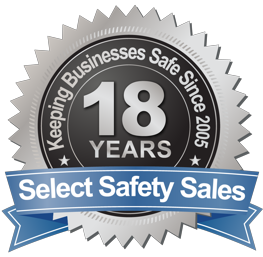Safety Tip of the Week Archive
Understanding Body Armor
When it comes to understanding body armor there can be confusion over which type of body armor protects against which type of ammunition. Understanding the NIJ 0101.06 armor protection levels is clearly explained. The term "Bullet Proof" is a widely used term that is inaccurate and paints a picture that it cannot be penetrated. Any body armor has the potential to be penetrated. There are various levels of protection that must be adhered to in the law enforcement world. The (Justice Technology Information Center) JTIC Understanding NIJ 0101.06 Armor Protection Levels is a snapshot of the projectile threats and classification of body armor related to these threats. Here is NIJ complete info on Body Armor.
SILICA, SILICA, SILICA! As they say, it's the new asbestos! But really not so new. It has been hurting so many in the workforce for a very long time, since the early days of construction. OSHA's silica rule has been in effect for Construction since June 23, 2017 and for General & Maritime since June 23, 2018. This rule applies to anyone with exposure to respirable crystaline silica which causes silicosis which is a disabling incurable lung disease. Workers that use machines that generate this airborne dust when cutting or grinding need to protect themselves through engineering or with the proper PPE to block the respiration of the dust particles.
Lockout and Tagout of your machinery is a procedure that goes hand in hand. A tag should always accompany the lockout of any machine to verify who locked the machine out and when. If any of your employees maintain or service any machine, they should be protected against the unexpected startup or release of stored energy. In FY 2018, the number of lockout/tagout violations were number five of all OSHA violations handed out by OSHA and in 2017 there were 71 electrocutions in the US. There should be no excuse for not locking out equipment and there should be regular in-service meetings when a new piece of equipment comes into play. All new employees should be trained on the the lockout procedures of the company. Kina Repp knows all to well what happens when a machine is not locked out.
Hydration and Electrolyte Replacement in the Winter
Hydration is just as important in the winter as it is in the summer. Realizing that you are dehydrated when it is cold outside is more of a challenge. We perspire underneath the layers of clothing that keep us warm in the winter. Perspiration is absorbed by our clothing and we think we sweat only when it is hot outside. That is so far from the truth! When in an industrial setting in the winter months we need to be more aware of hydration. We tend to drink less and dehydration is less obvious. We are more prone to accidents in the workplace while operating machinery or working at a job site when we are dehydrated. Be aware of this possibility and remember that the temperature outside is not as important as the temperature inside of your body. To combat dehydration, look at the All Natural Sword Electrolyte Replacement products here!
Youth & Summer Camps Preparation in the Covid-19 World
To Be Vaccinated or Not to Be Vaccinated - That is the Question!
Vaccinations Are Working- Get it Done As Early as Possible






